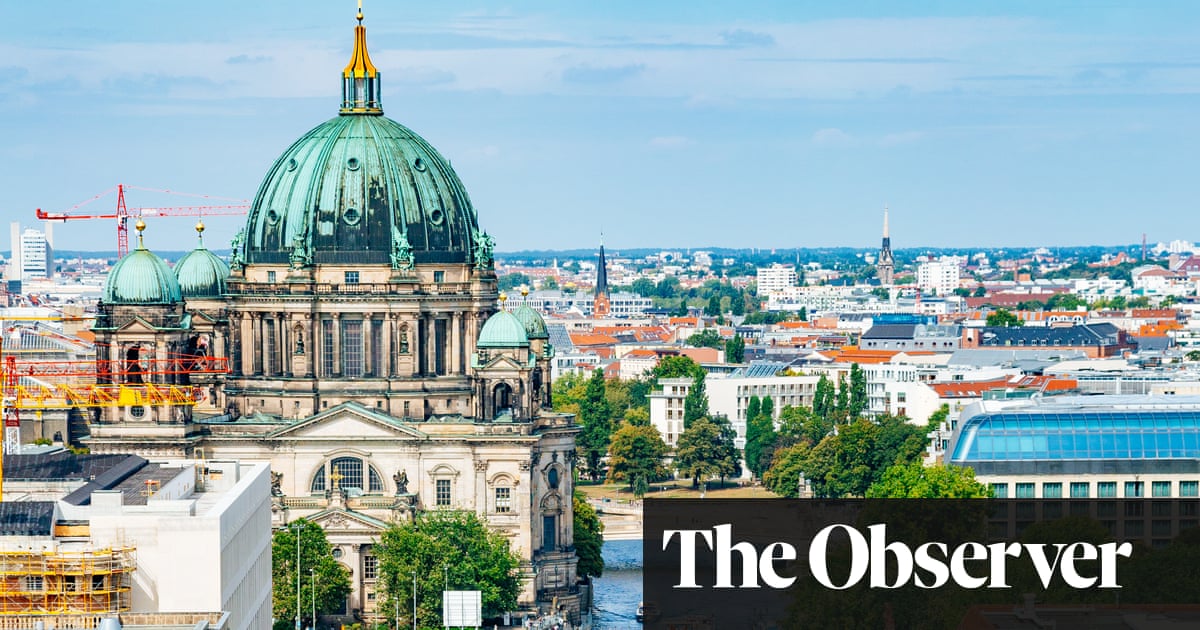On the evening of our overnight train journey from Amsterdam to Berlin and on to Dresden aboard the European Sleeper, we enjoy a restorative plate of oysters and steak tartare on the decks of Amsterdam’s BrasserieMarie overlooking the Amstel. Then, after a nightcap in the adjoining Freddy’s Bar, a legendary spot in the Hotel De L’Europe, we make the short stroll to Amsterdam Centraal Station for the so-called Good Night Train.
At 22.20 we board the train to Berlin, the bunks are swiftly made up and the blinds part pulled down for sleep. You can open the window for fresh air, brush your teeth in your own basin and there is crisp, clean linen. This slow journey is all about the romance of life on the track – and, for me, a lingering nostalgia.
To avoid my car-sickness as a child, I’d be taken on night trains across the Alps, those peaks of whipped meringue that collapsed on to the plate of the Po Valley by morning. Today, on the Brussels to Prague route, it’s to bed and in that soothing suspension of time and place, that familiar funnel of darkness, I surrender to the clicking rhythm of the track and fall soundly asleep.
Day two, 06.00. Early morning arrives with a wake-up call: a hot drink in a polystyrene cup and breakfast in a box. The city approach is through a patchwork of urban gardens known as Schrebergärten. The fenced green colonies with their inhabited shacks on former no man’s land along railways is a typical German phenomenon, the ticket inspector tells me. It harks back to the first world war when the extra food production provided by allotments was part of Berlin’s war effort.
This strange rooftop gnomesville soon gives way to the futuristic glass prism structure that is Berlin Hauptbahnhof, the largest railway terminal in Europe, welcoming 1,200 trains a day. It is impossible to remain unmoved by the vast space, across five floors, teeming with life and possibility, connecting to the continent and, imaginatively, to the rest of the world; to Belarus, Finland, Russia and Kazakhstan, before the reality of the Ukraine war put a stop to that.
Berlin serves as a hub for the night trains which, alongside the thrice-weekly European Sleeper that starts in Brussels, include the Nightjet from Austria and the midnight train from France. In the fallow time before we can check into our central hotel, we stop for a generous buffet breakfast, a swim, much-needed showers and a sauna at the neoclassical Oderberger public baths.
Our own accommodation at the Circus is a stroll away on the furthest edge of leafy cobblestoned Prenzlauer Berg – formerly, a working-class Jewish enclave, then a hot-bed of dissent and counterculture in the divide of the city after the second world war.
The hotel offers a range of accommodation options. One, the Circus Hostel (prices from €19pp, sharing a four-bed dorm), has a buzz, with its microbrewery in the basement and Fairtrade coffee bean roastery. The private floors have retro-design apartments with bathrooms, kitchen and furnished balconies looking over the urban skyline and gritty streets (the nicest double, the cheerful signature Panorama Suite, starts at €149). Alternatively, there’s the Circus Hotel over the road (doubles from €130 a night), in the former haberdashers that was fabisch, before it was “Aryanised” and closed down by the Nazis. This option offers another level of sophistication with rental bikes, courtyard garden and slick design details, including an eco-friendly air-conditioning system. They also plant a tree for every booking made directly.
This is a fabulous area for strolling. Walk northbound past the chestnut trees of Kastianallee, rechristened Casting Alley when the wall came down, for all the models and would-be starlets in the early 2000s hoping to be discovered here. At its north end, sits Prater Garten at Eberswalder Strasse, the oldest beer garden in the city, and we discover live music at Kulturbrauerei, a converted brewery.
Midmorning we visit Altes Museum, home to one of the most important collections of classical antiquity. These treasures and spoils of war were first acquired privately by Friedrich Wilhelm I in the 17th century. When a newly self-aware bourgeoisie campaigned for public access, Altes was the first museum to open, in 1830. It was repurposed for propaganda in the Nazi era, before the exhibits were taken for safekeeping to Berlin Zoo and mountain mines or stolen by the Soviets and secreted across the Siberian landmass. Today, highlights include a Roman marble copy of the Boy with Thorn, foreplay on the side of an erotic Grecian vase.
Back on the European Sleeper we head to Dresden, not quite two hours away. It has an instant holiday vibe, a university town with open parkland, riverbanks and squares that are traffic-free and walkable. Compared to cosmopolitan Berlin, it is more straitlaced and somewhat straitjacketed by the legacy of its Soviet occupation. The architecture and art treasures that defined the fortunes and destruction of this “Florence on the Elbe” have been reconstructed at the Zwinger, modelled on Versailles. We imbibe the classical past and the Old Masters at the Staatliche Kunstsammlungen Dresden (SKD), and sculpture and artwork predating 1800 within the 14-strong museum complex. Then a break for lunch on the terrace at the Alte Meister Cafe at the Zwinger.
Our inn for the night is Hotel Suitess, with views over the rebuilt Frauenkirche cathedral, where we watch firefighters conducting tight drills up the steeple. The city went up in flames following the Allied bombing of 1945 – and no one is taking chances. To counter such sobering thoughts, we repair to the hotel’s Gin House – a classic bar with 1920s-style smoking lounge– for some juniper schnapps. It’s just the ticket.
The Good Night Train costs from €219 to €399 per person for a private sleeper compartment (europeansleeper.eu)

